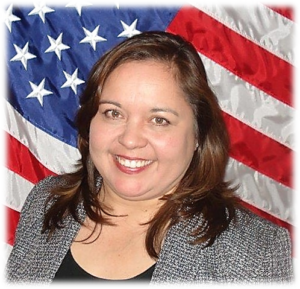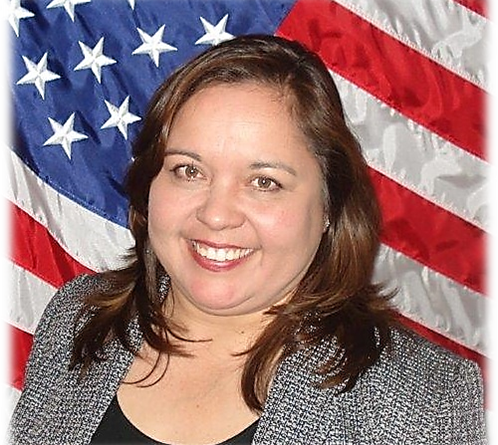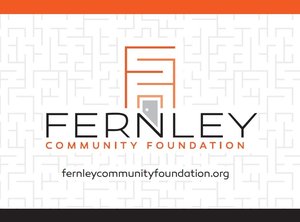Hooper discusses water and sewer rate increases
Robert Perea, The Fernley Reporter
During an interview Tuesday afternoon, Fernley City Manager Daphne Hooper said the City Council had no other options to generate the revenues necessary to maintain and operate its water and sewer system than to raise individual user rates.
Hooper was a guest on the Fernley Reporter’s weekly segment on Biggest Little Radio, and she said the increases were necessary because the city’s water and sewer funds have been operating at a loss the past two years, causing the city to deplete its reserves in those funds.
She said additional infrastructure is needed to retrofit the water treatment plant to be able to treat surface water, which will be needed as the city grows.
She explained how the city arrived at the amounts it will be charging, both for water and sewer rates, and for the bond debt assessment fee levied on city residents to help pay off the city’s debt for the construction of the water treatment plant.

The following are some of the highlights from Hooper’s interview with Robert Perea from the The Fernley Reporter and JFierce Rodriguez on Biggest Little Radio on Tuesday, Nov. 29.
To listen to the interview, click here.
Daphne Hooper – (Explaining the reasons for the water and sewer rate increases, and how they came about) We looked at the challenges that we have as far as just meeting basic maintenance and operation needs, looking at long term sustainability and what it costs to maintain our infrastructure and challenges with that as well as building a revenues reserve in case we have emergencies and challenges, as well as looking at water bond debt that we have for the water treatment plant. So after evaluating all of that, the consultant put all of the numbers through a model, and came up with some recommendations as far as what those numbers should be and where we should be at. The challenge that we had going if the city council didn’t make any adjustments we would have been in the negative, we would have been operating in the red. We can’t do that.
We’ve been operating at a loss for the past couple of years and what that means is that we had some reserve that we could use, but we’ve been tapping into that at about $1 million a year. So just like your individual savings account that you have at home, you know it’s there for savings and for use when you need it, but when it runs out, it runs out and so then you have to figure out what to do next.
Instead of just picking a number out of the air for what it would be, they have decided to cover the entire bond debt payment, including principal and interest and place that on the property tax rolls.
(The reason the water treatment plant needs to be retroffited)
We have about 10,000 acre feet of ground water right that we used to supply the city. If growth continues to happen we need to look at our capacity to be able to use additional water. So the city has about 10,000 acre feet of surface water rights right now. Our water treatment plant doesn’t have the ability to treat the surface water. When the water treatment plant was built, it had the ability to expand and do that, but there’s some upgrades that need to be done to complete that. Those were also calculated as capital costs in our water rate study to make sure that we are able to cover those costs in anticipation instead of having to take out large, massive loans in the future and be in the same boat.
In the first year, just with the anticipated amounts that we have proposed we’ll only be about $150,000 in reserves for this upcoming year and then it’ll build after that. After about five years we’ll have about $11 million, but understand, that’s just not free money sitting there that’s used for whatever we want it to be, there’s designated projects that are outlined to cover what we need to do for our system that are calculated for use of those reserves. So it’s not just like we’re putting money aside and taking money from everybody. There’s specific projects that need to be done.
Q- Is this going to help our hard water issue?
Our water right now we treat for arsenic. That was the federal mandate that really kind of started the challenge with having to do something with our water. There was a federal requirement to address arsenic in the water and that’s when the water treatment plant got built. Our primary treatment is for arsenic. Surface water is treated a little bit differently just because of the chemical makeup of the water.
So will our hard water change, probably not, but when we start integrating surface water we’ll have to look at things like taste and odor and what that means for the system. But we’re doing a water quality study, actually it’s going to the council I believe next week, to finalize that and approve that to move forward, and it’s going to cost us a little bit of money to see what kinds of things we need to treat and make sure we have the right tools in place.
We believe our water is really good. It’s drinkable. I’ve heard some people say you can’t even drink the water. It is 100 percent safe, and it’s drinkable and it’s usable.
Q – How much growth can the city accommodate without having to tap into the surface water?
A- Very little. Right now the city, we have the capacity to manage the water, but if people want to build more, they’re going to have to bring water to the table. So we don’t have enough water just to sell from the city.
Q – Is 5 years about the time it would take to retrofit the water treatment plant to treat surfaced water?
A – We do have a little bit of money set aside specifically for that, but depending on how quickly we want to move or what the need is, it takes a little bit of time to design and engineer and grow things. The good news is we’re not having to build another treatment plant. There’s some retrofitting and some things that need to be added, so it’s not going to take a long time, it’s just a matter of when we want to take that step. So I believe in the water rate study, we planned out about five years for that to happen.
Q – So that will be funded with cash on hand and not with another bond?
A – Hopefully. We’re trying to look for some alternative sources of funding. One of the questions I always get is how come the city didn’t get grants when they built the original treatment plant? So we are looking for some alternative sources of funding. We are making sure that we are just not going to take the dive and make everybody else pay for it. We’re really trying to plan appropriately and we’re really gauging what steps we need to take to do that. There’s a couple of different levels of requirements of what we might need to get to that step and some are more expensive than others, so that’s why we’re doing the water quality test, to make sure we make the right choices and don’t put in things that aren’t necessary. So we’re trying to take a real proactive approach and making sure that we’re making good decisions.
Q – (Paraphrased) How much are the increases?
A- The first increase that I talked about was the increase that’s going on the property tax rolls, and that’s to address the water bond debt. On your water bill there’s two fees. There’s a water rate and then there’s a sewer rate. So we’re going to increase both of those. The sewer rate will go up about $7 a month, and then the water rate is going to be significantly more. So what will happen, it’s about $19 a month now for the base rate, and then you’re charged an additional amount on top of that for usage. This rate will now be for a standard ¾-inch meter, the base rate itself is going to be $42.85 a month for the water, and then on top of that for every 1,000 gallons, it will be $3.03. It’s pretty significant.
Q – Councilman Dan McCassie calculated that a residence with an average use of 15,000 gallons per month would see an increase of $37.05 per month. Does that sound about pretty close to you?
A – Pretty close. When we were doing the water rate study, one of the things we needed to look at was the sustainability of the system. So when you have a base rate that’s low, and then you have the additional amounts collected based on the number of gallons, if people cut back on their water use, which they generally do when water rates go up, we still have to make sure that we have enough to maintain and operate that system. So conservation then becomes a challenge to us, because we won’t collect enough revenue to be able to continue to operate the system. So when they were looking at the water rate study, they really looked at what amount do we need to collect to make sure that we can fully maintain and operate our system. So by increasing that base rate, we know that that’s going to help at least cover the cost of what it takes to run that, regardless of how much people cut back.
Q – (Paraphrased) Was there no other ways to find the revenue without having to put it on the backs of the residents?
A – We looked at this over a long period of time and we went back and forth with our consultant and we challenged quite a bit, saying is there a different way of doing this, what are our alternatives, and there’s really not. I know it’s challenging and I know it’s really hard for people to pay, and I know people are concerned about their individual budgets, so one of the things we did was we really did was kind of a cost comparison about other municipalities and counties that provide water. The water is more, and part of that is because we have the water bond debt payment that we have because we have the significant debt service that we have to pay, but the water rates are compared there and it’s interesting to look at the comparison because our sewer rates are actually significantly less than some of the other places. So overall, yes its more than we’re used to paying, but it’s kind of aligning us with where we need to be, and what other places are charging.
Q – Are there going to be more increases down the road?
A –Unfortunately, we have to take this big steep jump from the beginning, but from here forward, there’s going to be gradual increases as we go along, to help cover the cost of inflation. The other thing is if we don’t take care of the challenges now, it you put them off and aren’t able to maintain them, things break, and then it costs more to replace them in the long run.
Q – (Paraphrased) Would new users coming in affect the rates at all?
A – Potentially, but what we’re going to do is, during our budget development every year, we’ll be looking at where we’re at. So if we have this huge spike in growth, then we need to sit down and evaluate where we’re at and is there an opportunity to adjust those. Unfortunately, however the costs of things continue to rise, so we have to make sure that we cover those costs as well. The City Council really struggled with making this decision. At the end of the day, they had a hard time because they understand the financial impact that it’s going to have on residents, but they understand that it’s something that needs to be done. We had some pretty challenging meetings and hard discussions, but at the end of the day, they felt, and I feel and our staff feels that it’s the best thing to do for the community in the long run.




